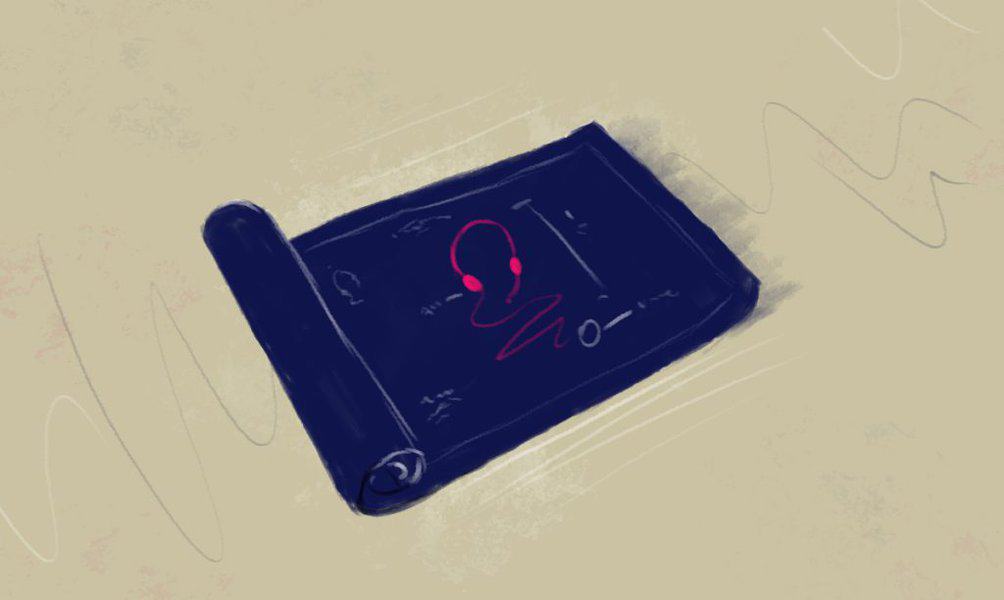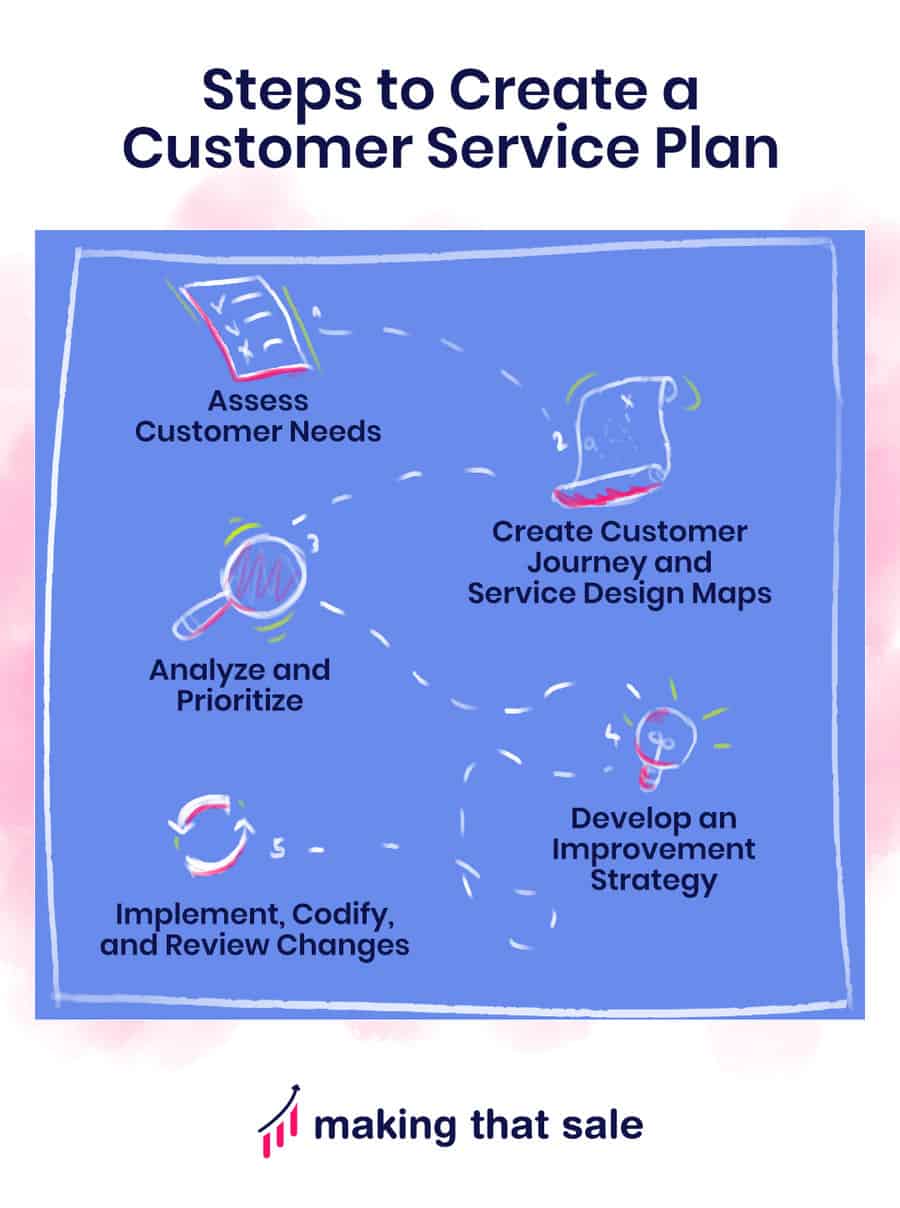Customer service is the direct one-on-one interaction between a customer at any stage of their purchasing journey and a representative of the company that’s selling to them.
How to Create a Customer Service Plan
Written by: Victoria Yu
Victoria Yu is a Business Writer with expertise in Business Organization, Marketing, and Sales, holding a Bachelor’s Degree in Business Administration from the University of California, Irvine’s Paul Merage School of Business.
Edited by: Sallie Middlebrook
Sallie, holding a Ph.D. from Walden University, is an experienced writing coach and editor with a background in marketing. She has served roles in corporate communications and taught at institutions like the University of Florida.
Updated on March 3, 2025

The difference between a satisfied customer and a loyal customer can mean the difference between your business sinking or swimming in the long term, as customers decide whether or not to patronize your company again in the future. As such, it’s in every business owner’s best interest to maximize customer satisfaction to the utmost degree.
However, as each business and product are different, it would be unwise to directly copy the customer service methods of another company. Instead, business owners should create their own unique customer service plan to turn lukewarm customers into satisfied ones, and satisfied customers into loyal brand ambassadors.
If you’ve found your current customer service to be lacking, don’t worry. This guide will walk you through all the steps to create a customer service plan that will raise both your company’s reputation and profits.
Key Takeaways
A customer service plan is a designated guide to the best strategies, policies, and practices employees should follow to ensure customer satisfaction.
Some benefits of a designated customer service plan are higher customer satisfaction, employee satisfaction, and brand reputation.
To create a customer service plan, a business should first assess customers’ needs, map its customer journey and service design map, analyze and prioritize areas for improvement, create an improvement strategy, and implement and review changes as necessary.
What Is a Customer Service Plan?
However, because customer service is mostly made up of one-on-one interactions, it means that the quality of a customer’s service experience is highly dependent on the communication and problem-solving ability of the representative with whom they connect. In other words, a customer could have an amazing service experience with one rep and an absolutely atrocious experience with another – a rollercoaster of precariousness that’s bound to leave customers emotionally weary, drained, and unwilling to do business with your company again.
As such, companies usually implement customer service plans, which are designated strategies, policies, guidelines, and best practices created to help company representatives interact with customers in a calm, consistent, and professional manner.

Benefits of Having a Customer Service Plan
So why exactly should you have a customer service plan? There are a number of reasons, all spelling good things for your company.
1. Improve Customer Satisfaction
A great customer service plan outlines the best ways to interact with customers during their customer journey, providing employees with the scripts and tools needed to answer questions and solve problems swiftly, efficiently, and consistently. Customers will surely be satisfied with consistently outstanding service!
As satisfied customers choose to return for more purchases and wonderful experiences, your customer loyalty and customer retention will both increase, driving long-term profit and customer lifetime value. In fact, according to the Harvard Business Review, customers with the best past experiences spend 140% more than customers with poor past experiences.
2. Boost Employee Satisfaction
Next, the customer service plan serves as a survival guide for customer-facing employees, providing standard operating procedures (SOPs) that tells them exactly what to say and do in any challenging situation. Having SOPs on hand to refer to reduces employee stress, impress efficiency, and boosts job satisfaction.
Additionally, a codified and compiled customer service plan turns onboarding into a breeze. Rather than having to learn every single step of the customer service process through shadowing or—even worse— the school of hard knocks, new customer service reps can, instead, simply read the customer service plan and study all the best techniques in one place.
3. Raises Brand Reputation
Finally, by creating an optimized, unified, and repeatable service experience, your brand will begin to gain a reputation for delivering excellent customer experiences.
As more and more companies pop up with near-identical product offerings, customers are increasingly relying on customer service to distinguish between brands worth their dollars. As such, the more you gain a reputation for great service, the more customers you’ll naturally attract.
How to Create a Customer Service Plan
Now let’s look into how you can make a winning customer service plan for your company. As we said before, we’ll first look into identifying the best service activities, so you can lock in on the best practices.
1. Assess Customer Needs
The first step is to find out exactly what customers are dissatisfied with. Though a business owner or manager might think that a certain change would be beneficial, at the end of the day, it’s the customer who gives the final verdict on whether the company’s service is good or not. That’s why it’s best to cater directly to customer needs and tastes.
In order to determine your customer’s needs and tastes, conduct customer research through interviews, surveys, focus groups, and phone calls to find out what customers want from your business. Your research questions could ask about expectations they had, concrete improvements they’d like to see, or recommendations on ways your company could improve in the future. Meeting customer needs should be the guiding goal behind all of your customer service activities.
For example, in a survey of what the most important aspects of a good customer service experience were, the top two responses for Americans were “a knowledgeable customer service representative” and “getting my issue resolved in a single interaction.” However, since these priorities may change by location, industry, and product, it’s best to survey your own target audience directly for the best effect.
2. Create Customer Journey and Service Design Maps
Next up is to develop your customer journey and service design maps, which will give you a comprehensive view of your current customer service experience.
Your customer journey map is a step-by-step flowchart of how customers experience your company, from the moment they first hear of your brand to their post-purchase service questions. This provides a clear view of every action customers take, what touchpoints they interact with employees through, communication channels they might use, and struggles they might encounter in their purchasing journey.
On the flip side, your service design map is the customer journey from the company’s point of view, detailing what employees are doing to support and satisfy customers at each step of the way. This service design map is the crux of your customer service plan. As such, you should take extra care to write out the exact dialogue reps should use, the materials they can show customers, and the time it should take them to complete each action.
Having clear flowcharts for these parallel processes will help managers identify areas where customers are being asked to do too much, employees are doing too little, or where nothing is being done at all.
3. Analyze and Prioritize
Now that you’ve got your customer journey and service design maps written out, it’s time to go through both diagrams with your team to analyze what’s working and what isn’t, and assess the gap between what customers need and what your company currently provides. With this knowledge, your team can codify the best service practices for each step of the customer journey, cut out extraneous practices, rearrange resources, and fill in gaps with more support.
However, it’s unlikely that you’ll be able to fix everything in one fell swoop. That’s why you should decide which issues you should focus on first, based on what service factors customers found the most important as well as the resources your company has available at the moment. It’s better to conclusively fix one issue rather than spreading your resources too thin by trying to fix everything!
4. Create Your Customer Service Improvement Strategy
Now that you have a prioritized list of the service processes that need to be improved, all that’s left is to come up with a concrete strategy to fix each item.
Based on the issues you’re facing in your current service, here are some options you could explore:
- Hiring new customer service representatives
- Redesigning processes and workflows
- Creating more service enablement material
- Investing in employee education and training programs
- Investing in a new service software or communication technology
- Creating an incentive program for employees
- Rearranging your physical office space
You should consult with your customer-facing employees as you create your improvement strategies to get their input on whether a solution would be viable or not, and to see if they have any other solutions they’d like to implement.
5. Implement, Codify, and Review Your Changes
Once you’ve got your course of action planned out, all that’s left is to execute your service improvement strategy, update your service design map, and ensure that your customers are happy with the changes. Congratulations on your new and improved customer service plan!
To ensure that your new plan is effective, it may be helpful to measure key performance indicators (KPIs) of customer satisfaction, such as your customer effort score, net promoter score, and churn rate. As you measure satisfaction levels before and after implementing your service changes, you can conclusively determine whether or not your customer service plan is successful.
Conclusion
Good customer service makes the difference between a one-time purchase and a returning, loyal customer, so it’d be wise for businesses to do everything in their power to improve customer service.
To that end, you can follow these steps to create your own unique customer service plan and hone in on the best techniques to guarantee customer satisfaction. With some careful consideration and strategy, you can take your customer service from acceptable to amazing, and keep your customers coming back.
FAQs
How else can I improve customer service?
Some other tips for improving your customer service are to hire the best customer service agents, give your agents the knowledge and authority to solve problems, use the best communication channels, regularly update your website, and personalize your customer experience.
What’s the difference between customer satisfaction and customer service?
While the two are very closely intertwined, they’re not synonymous with each other. While customer service describes the explicit actions and processes a company and employees use to help its customers, customer satisfaction simply refers to the level of happiness customers feel about their transaction, whether they interact with a service agent or not. So, for example, customer satisfaction includes elements such as product satisfaction and self-service.
Good customer service leads to higher customer satisfaction, but customers can feel satisfied without explicit service. Because of that, it would be wise to also pay attention to other elements that contribute to your customer satisfaction.
What tools can I use to help my customer service department?
Customer support software, or help desk software, helps agents by centralizing all email, phone, chat, and social media messages into one platform for easy management, providing automated responses, and storing customer information for future reference.
Some vendors of customer support software are Zendesk, Zapier, and Zoho Desk. You can buy these programs as stand-alone services or integrate them into a CRM (customer relationship management) system to manage your marketing, sales, and customer service functions from one platform.
